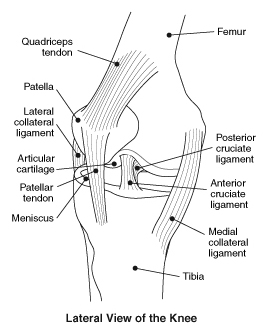What Is Canine Arthritis?

Arthritis means inflammation of a joint. It commonly occurs in dogs as a result of wear and tear on a joint from years of running, jumping and walking. This causes the cartilage, which cushions the impact on the joint, to wear away so that the bones are able to rub on each other. This can be very painful.
Veterinarians often refer to the condition as osteoarthritis ('osteo' refers to the involvement of the bone), or degenerative joint disease, which indicates that it is due to degeneration of a joint over time.
The development of osteoarthritis is a chronic process and can affect not only the bones in the joint but also the cartilage and soft tissues surrounding it.
The most commonly-affected joints of dogs are the hips, the stifle (the dog's knee), the elbow and the carpus (the dog's wrist). Less frequently, the joints in the spine, or intervertebral joints, may also be affected.
Bones are joined by ligaments, which are strong fibrous bands of tissue. The surfaces where they come into contact are covered with articular cartilage, which is designed to cushion the impact on a joint. Surrounding the joint is a fibrous joint capsule holding everything together and containing the joint fluid, called synovial fluid.
|
"Arthritis is more common in large breeds of dogs, especially those that are overweight, as the joints are
under more pressure."
|
This fluid lubricates the cartilage surfaces and ensures that they slide past each other smoothly when the joint moves. The stifle joints also contain two menisci, crescent-shaped pieces of fibrocartilage which assist in stabilising the joint. These are not present in other joints such as hips or elbows.
Arthritis occurs as a result of stress on a joint. It is more common in large breeds of dogs, especially those that are overweight, as the joints are under more pressure. Simple wear and tear over a long period of time can cause inflammation and damage to a joint, with the cartilage cracking or being worn down, exposing the bone underneath. Ligaments also may tear, making the joint unstable.
|
Arthritis medications |
| Pet Shed's most popular arthritis treatments. |
Other joint abnormalities, such as hip dysplasia or elbow dysplasia, where the joint does not have a normal conformation, will also increase the likelihood of arthritis. In these cases the joint's shape is not optimal, resulting in uneven weight-bearing between the bones. Traumatic damage to the joint or tearing of the joint capsule can also trigger the arthritic process.
When a joint becomes inflamed, it sets in motion a series of events which eventuates in the destruction of the joint. Enzymes are released from inflamed cells (particularly cartilage and synovial cells), which degrade joint proteins and collagen. This damages more cells and sends white blood cells to the joint, worsening the inflammation.
This sets up a vicious cycle of inflammation. Damaged synovial cells produce a much lower-quality fluid, so joint lubrication is compromised. Inflammation can result in the complete destruction of the cartilage in the area.
|
"Inflammation can result in the complete destruction of the cartilage in the joint."
|
The bones become exposed and have to bear the animal's weight themselves, with no cushioning from the cartilage. The unstable joint reacts by laying more bone on top of the existing bone in an attempt to stabilise itself, but this only serves to further deform the shape of the joint.
Ultimately, inflammation and joint destruction becomes painful, causing the dog to become reluctant to move the affected limb. This can manifest itself, among other ways, as stiffness, lameness, reluctance to walk, or a difficulty getting up in the morning.
If you see any of these signs in your dog, it may be time to consider action. Consult your veterinarian to discuss the best treatment plan for your pet.